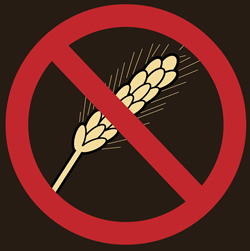
There have been no reports of allergic reactions to Mount Royal Light but we cannot claim that it is gluten-free due to TTB regulations.
We’ve been asked a few times if Mount Royal Light is gluten-free. After a bit of exploring and asking the Sazerac reps here’s your answer:
Gluten is the protein-containing part of grain. Wheat gluten is what people are most concerned about, especially those with Celiac disease. All of our domestic vodkas are produced from corn. Weller and Van Winkle products do have wheat in the recipe; however our other Bourbons only use corn, barley and rye.
Other countries have determined that distilled products with no additives (vodka, bourbon, tequila) can be considered gluten-free as they are pure distilled products. United States has not made such a ruling, yet. To the best of our knowledge, the distillation removes or denatures the proteins and gluten associated with the starting grains.
Until very recently it was against regulations for any alcohol beverage to advertise as “Gluten-free.” The Alcohol and Tobacco Tax and Trade Bureau of the U.S. Department of the Treasury has just come out with a ruling for producers to start voluntarily labeling products that contain one of the eight major allergens: wheat, milk, eggs, soybeans, peanuts, treenuts, fish, and shellfish. We expect that this regulation will soon become mandatory.
We have not heard of any adverse allergic reactions nor had any complaints from celiac patients to our products. However, as always, please consult your physician before consuming any alcoholic beverages.
Basically, we cannot claim that Mount Royal Light is gluten-free because of TTB regulations, but “we have not heard of any adverse allergic reactions nor had any complaints from Celiac patients” to it. Drink on MRL lovers!

